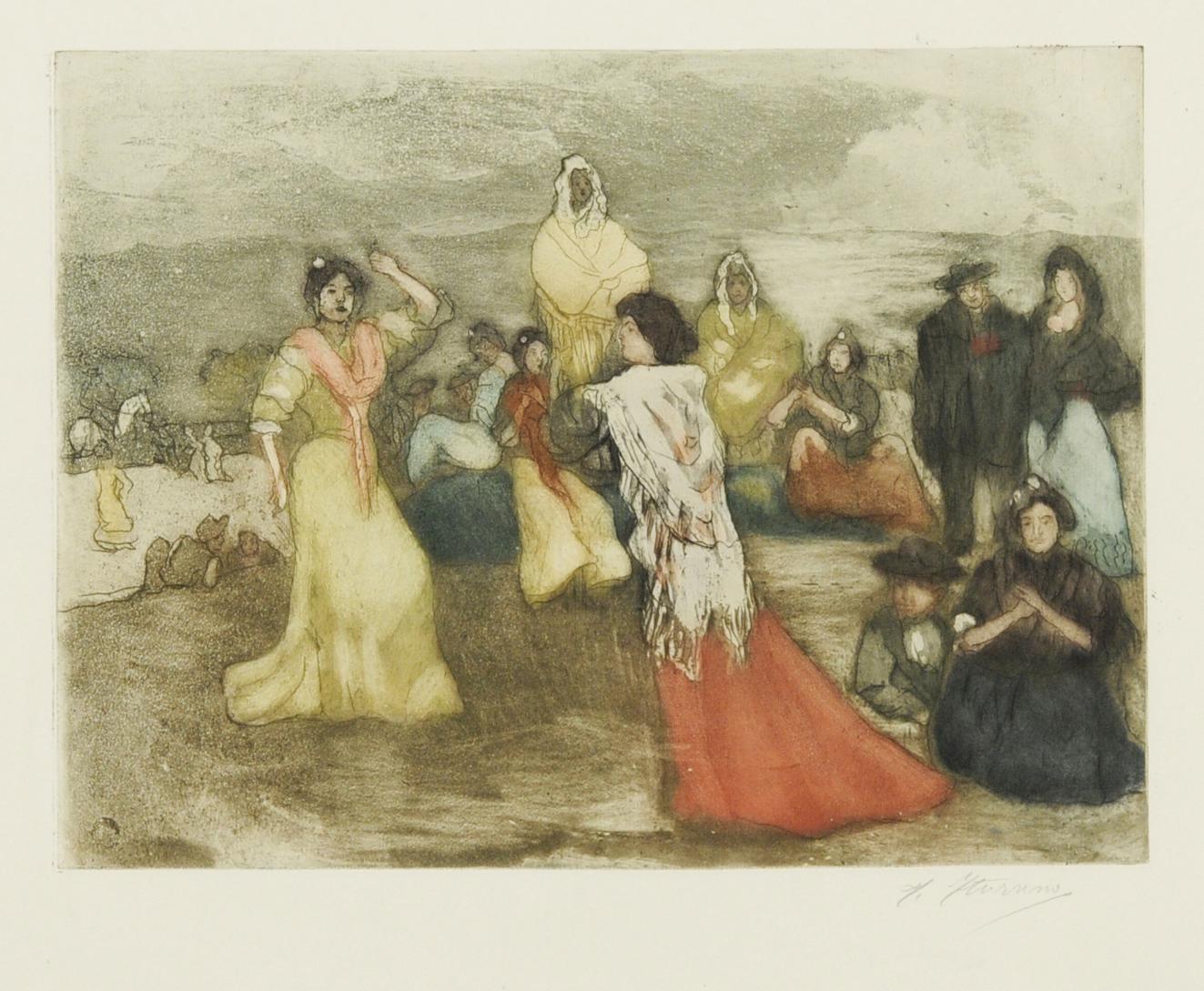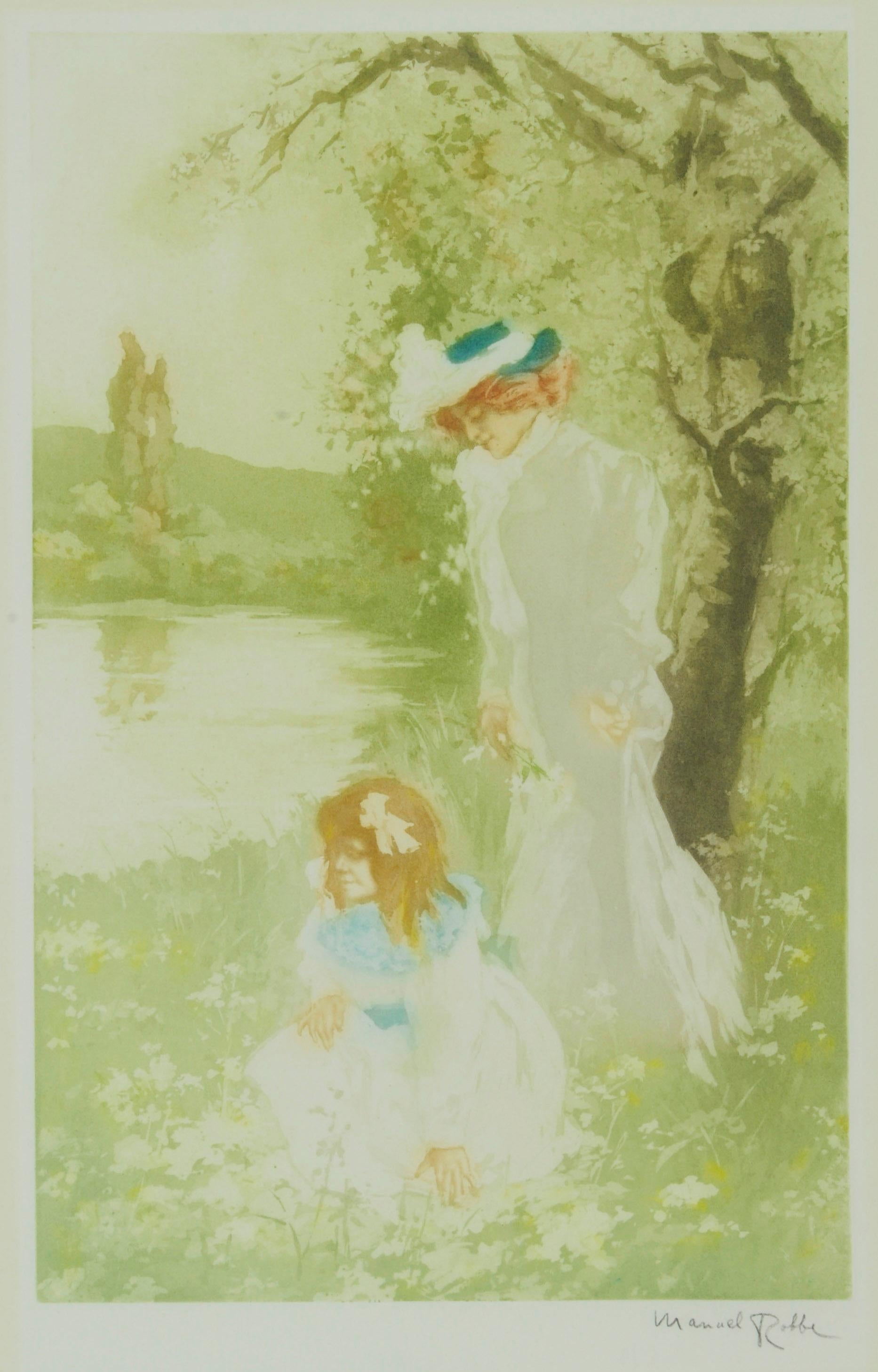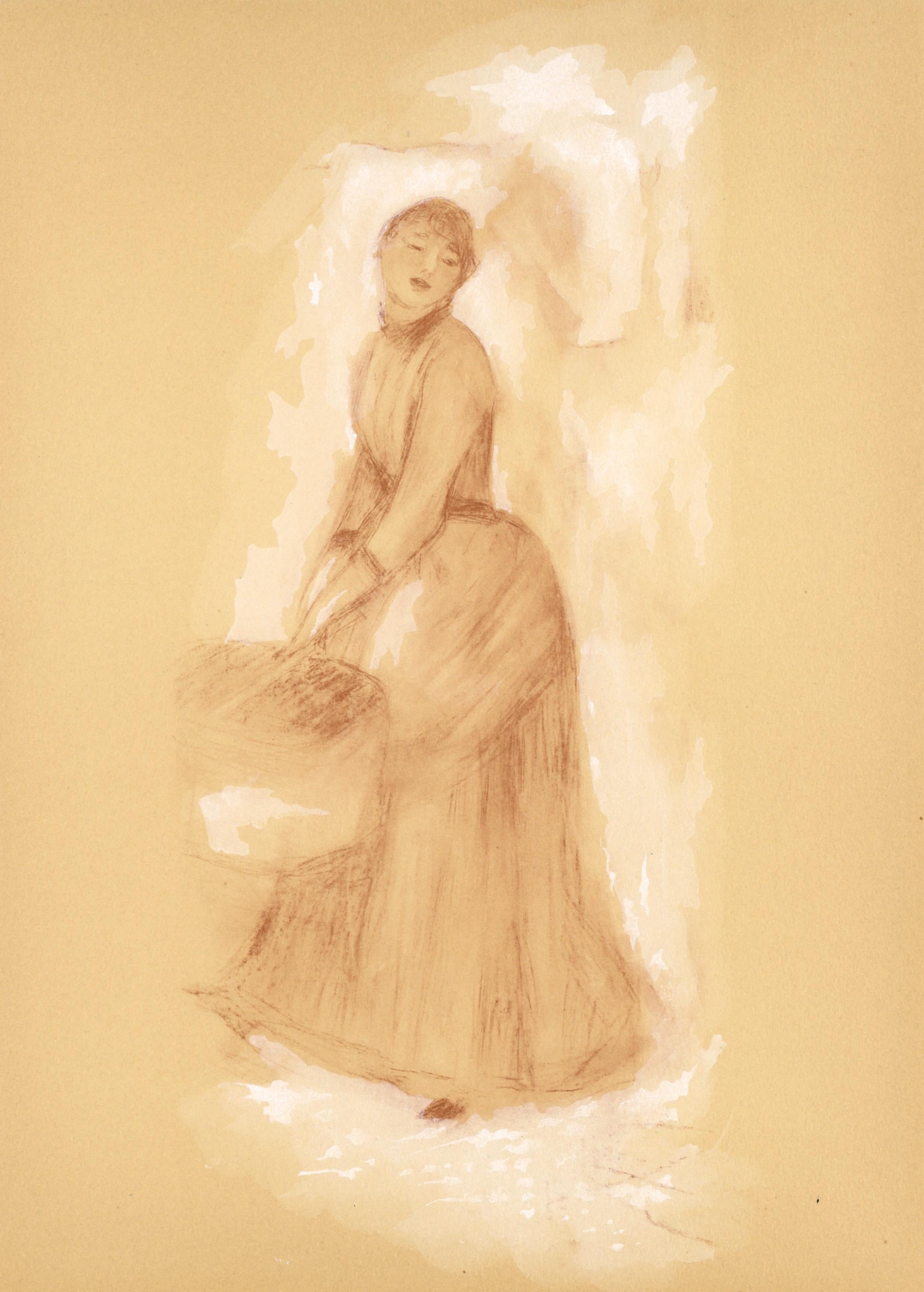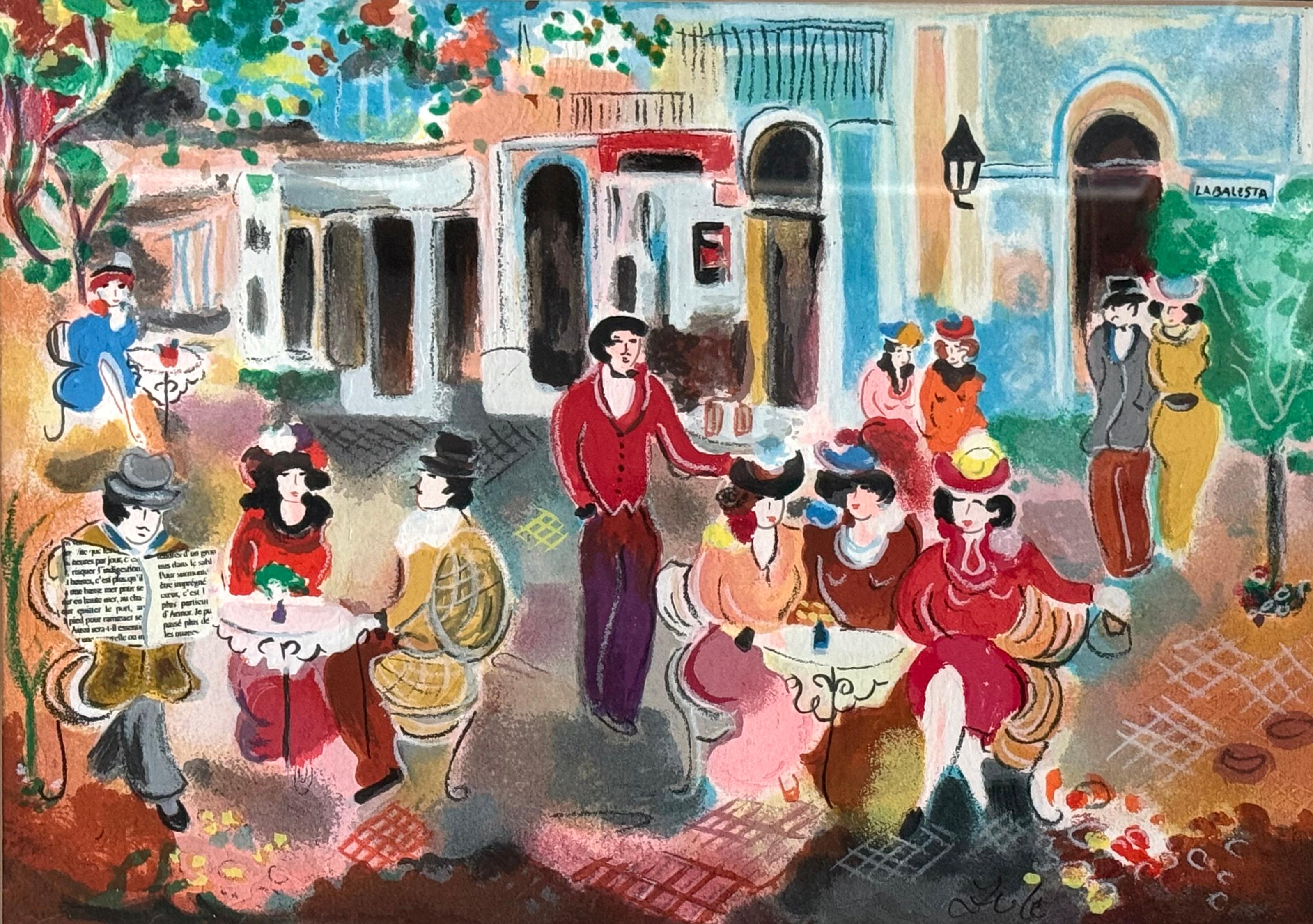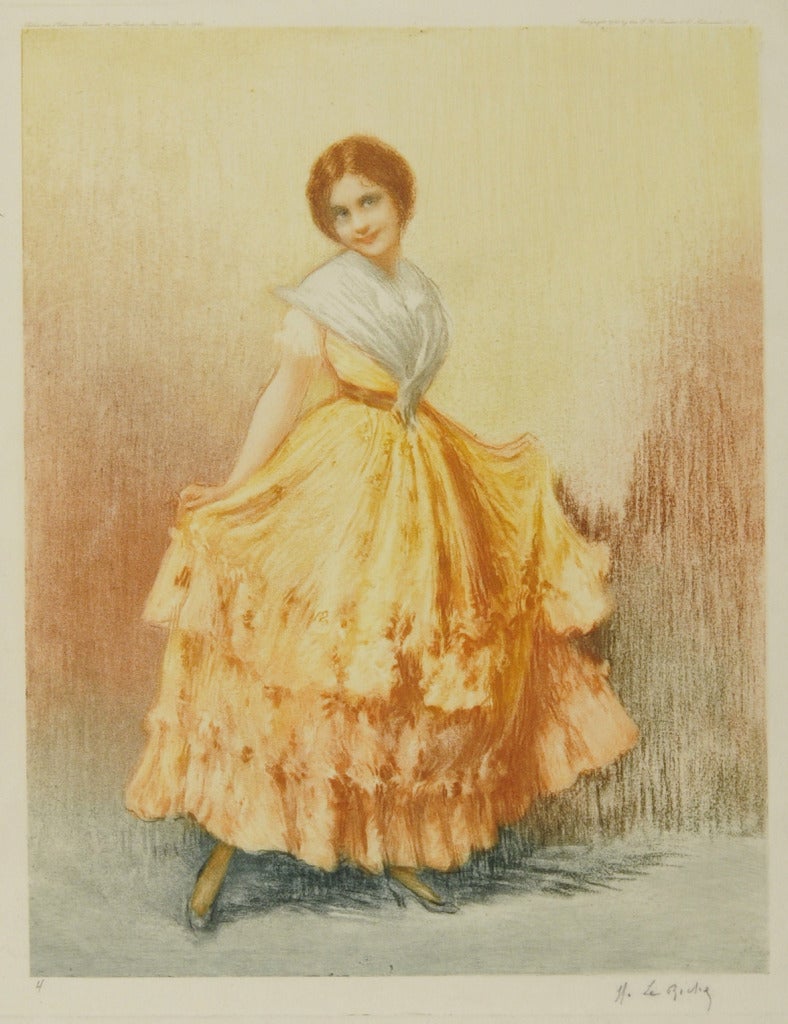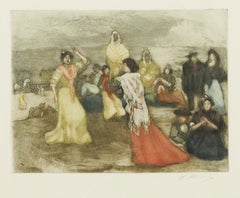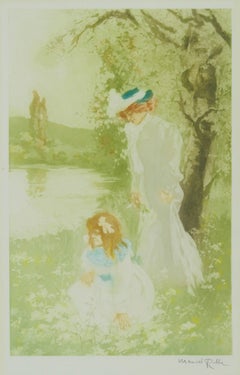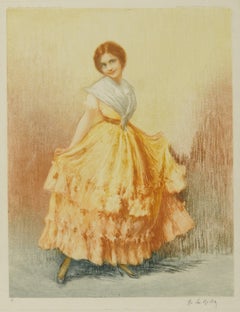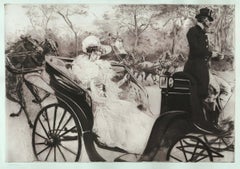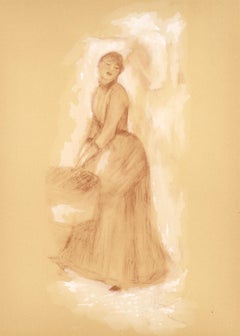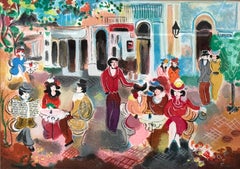Want more images or videos?
Request additional images or videos from the seller
1 of 10
Allan Erik August OsterlindA la Corridac. 1900
c. 1900
$1,250
£972
€1,105.18
CA$1,800.89
A$1,969.04
CHF 1,029.44
MX$23,687.26
NOK 13,026.50
SEK 12,217.71
DKK 8,252.27
About the Item
A la Corrida
Color aquatint, c. 1900
Signed "Osterlind" lower right in red pencil
Annotated: "No. 96" in pencil lower left
Edition: about 100
Published by Sagot, Paris: their blindstamp lower right
Image/plate size: 27 3/8 x 19 1/4 inches
Sheet size: 31 1/8 x 23 3/4 inches
Condition: Very good, one small (repaired tear in the right margin, not affecting the image
Erik Allan August Österlind (2 November 1855, Stockholm - 23 June 1938, Juvisy-sur-Orge) was a Swedish painter and engraver who spent most of life in France.
Biography
The Pied Piper of Hamelin
He was born to a family of the Swedish nobility and his father was a wholesale merchant. From 1874 to 1875, he studied at the Royal Swedish Academy of Fine Arts. As many young Swedish artist did, he went to Paris in 1877 so he could establish his career by exhibiting in the various salons. He soon became a member of the Swedish community there and became a lifelong friend of the painter, Ernst Josephson. He also became acquainted with Ville Vallgren, Christian Skredsvig, August Strindberg and Prince Eugen.
In 1878, he enrolled at the École des beaux-arts de Paris to study sculpture with Pierre-Jules Cavelier, who recommended that he become a painter and illustrator instead. From 1879, he was a frequent visitor to the artists' colonies at Barbizon and Grez-sur-Loing. Over the next decade, he gave several exhibits of watercolors and portraits, often with dark undertones. He also made visits to Brittany and Creuse, which became one of his favorite places.
In 1884 he, Josephson and Richard Bergh held a joint showing in Stockholm and, two years later, in Gothenburg. The following year, he became a signatory to an anti-Academy manifesto issued by a group known as the "Opponenterna [sv]". Despite opposition from King Oscar II, he and other Swedish expatriates participated in the Exposition Universelle (1889), and he was awarded a silver medal.
That same year, he married Joséphine Eugénie Carré (1862-1916), thereby legitimizing their two children, Anna Alina (born 1882) and Anders, who would also become a painter. As a result, he remained in France for the rest of his life, although he never gave up his connections to Sweden and maintained a regular correspondence with Prince Eugen..
In 1890, he ceased participating in showings at the regular salons and became a member of the Société nationale des beaux-arts, which began having annual exhibitions that year. Three years later, possibly at the urging of Josephson, he travelled throughout Andalusia, making sketches that would later become watercolors. In 1894, he was named a Chevalier in the Legion of Honour. In 1900, he founded an association of watercolorists and began creating aquatints.
The start of World War I and the death of his wife two years later left him in a state of depression and he spent more time travelling. He also began a curious collection of portrait paintings of the inhabitants of the Île-de-Bréhat, done on glasses and plates, at a local cabaret called the "Café des Pêcheurs". Apparently, unable to pay his bill, he had painted a portrait of himself as compensation. Several artists followed suit and the Café became known as the "Cabaret des Décapités". Some of them may still be seen at the Verrerie.
He died in poverty in 1938. His works may be seen at the Nationalmuseum, the Musée des beaux-arts de Tours, Musée des beaux-arts de Reims and several others in France and Sweden."
Courtesy Wikipedia
- Creator:Allan Erik August Osterlind (1855 - 1938)
- Creation Year:c. 1900
- Dimensions:Height: 31.125 in (79.06 cm)Width: 23.75 in (60.33 cm)
- Medium:
- Movement & Style:
- Period:
- Condition:
- Gallery Location:Fairlawn, OH
- Reference Number:Seller: FA48901stDibs: LU14016519332
About the Seller
5.0
Recognized Seller
These prestigious sellers are industry leaders and represent the highest echelon for item quality and design.
Gold Seller
Premium sellers maintaining a 4.3+ rating and 24-hour response times
Established in 1978
1stDibs seller since 2013
820 sales on 1stDibs
Typical response time: <1 hour
Associations
International Fine Print Dealers Association
- ShippingRetrieving quote...Shipping from: Fairlawn, OH
- Return Policy
Authenticity Guarantee
In the unlikely event there’s an issue with an item’s authenticity, contact us within 1 year for a full refund. DetailsMoney-Back Guarantee
If your item is not as described, is damaged in transit, or does not arrive, contact us within 7 days for a full refund. Details24-Hour Cancellation
You have a 24-hour grace period in which to reconsider your purchase, with no questions asked.Vetted Professional Sellers
Our world-class sellers must adhere to strict standards for service and quality, maintaining the integrity of our listings.Price-Match Guarantee
If you find that a seller listed the same item for a lower price elsewhere, we’ll match it.Trusted Global Delivery
Our best-in-class carrier network provides specialized shipping options worldwide, including custom delivery.More From This Seller
View AllSevillanas
Located in Fairlawn, OH
Sevillanas
Etching and color aquatint on laid watermarked paper, c. 1900
Signed by the artist in pencil lower right (see photo)
Editioned in pencil lower left corner of sheet
Publish...
Category
Early 1900s Post-Impressionist Figurative Prints
Materials
Aquatint
Avril
By Manuel Robbe
Located in Fairlawn, OH
Avril (April)
Color aquatint and etching, c. 1906
Signed in pencil lower right
Edition: c. 100
Excellent impression, fresh colors
Reference: Merrill Chase Volume 1, No. 9
Condition: ...
Category
Early 1900s Impressionist Figurative Prints
Materials
Aquatint
Merieanna
By Almery Lobel-Riche
Located in Fairlawn, OH
Merieanna
Etching and aquatint, c. 1900
Signed by the artist in pencil lower right
Titled in pencil lower right corner of sheet
Annotated "4" lower left below image
Publisher's dryst...
Category
Early 1900s Impressionist Prints and Multiples
Materials
Aquatint
La Promenade
By Edgar Chahine
Located in Fairlawn, OH
La Promenade
Etching, soft-ground, aquatint & drypoint,
Signed in pencil lower left
Published by Edmund Sagot, Paris
Edition of 50 in black only, aside from the edition of 50 in co...
Category
Early 1900s Art Nouveau Figurative Prints
Materials
Drypoint, Etching, Aquatint
Daureen, II
By Nell Blaine
Located in Fairlawn, OH
Daureen, II
Etching, 1969
Signed in pencil lower right
Edition: 28 (17/28)
Condition: Excellent
Two hinges from previous matting
Blaine studied etching at Atelier 17 in New York and considered one of their distinguished alums.
"Blaine was foremost an abstract painter, first a student of Theresa Pollak...
Category
1960s Impressionist Figurative Prints
Materials
Etching
En Espagne
By Victor Max Ninon
Located in Fairlawn, OH
En Espagne
Pochoir (silk screen) printed in colors
Signed by the artist in pencil lower right
The artist won a gold medal in Paris in 1925 for his pochoirs
Condition: Excellent
Image...
Category
1920s Art Deco Figurative Prints
Materials
Screen
You May Also Like
Les Cavaliers
By Jean-Pierre Cassigneul
Located in San Francisco, CA
This art work titled "Les Cavaliers" 1988 is an original large colors lithograph on wove paper by French artist, Jean Pierre Cassigneul, born 1935. It is hand signed and inscribed E...
Category
Late 20th Century Post-Impressionist Figurative Prints
Materials
Lithograph
"Etude pour Les Parapluies" pochoir
By (after) Pierre Auguste Renior
Located in Henderson, NV
Medium: lithograph with pochoir coloring (after the 1895 drawing in sanguine). Printed in 1948 on Johannot paper for the rare "Seize Aquarelles et Sanguines de Renoir" portfolio and ...
Category
1940s Impressionist Prints and Multiples
Materials
Lithograph, Stencil
“La Balesta”
By Zule Moskowitz
Located in Southampton, NY
Original colored lithograph by the Argentina born artist Zule Moskowitz. Signed “Zule” bottom right. Condition is excellent. Circa 2000. Gallery label verso. Under glass. Beautifull...
Category
Early 2000s Contemporary Figurative Prints
Materials
Archival Paper, Lithograph
$600 Sale Price
20% Off
Corrida
By William Sharp
Located in Middletown, NY
Lithograph in colors on cream wove paper, 15 1/2 x 20 1/2 inches (394 x 520 mm); sheet 18 x 23 1/4 inches (457 x 590 mm), full margins. Signed and titled in pencil, lower margin. Som...
Category
Mid-20th Century Modern Figurative Prints
Materials
Lithograph
Kostume, Plakate, und Dekorationen, "Lo Hesse"
By Walter Schnackenberg
Located in Palm Beach, FL
Walter Schnackenberg’s style changed several times during his long and successful career. Having studied in Munich, the artist traveled often to Paris where he fell under the spell of the Henri de Toulouse-Lautrec’s colorful and sensuous posters depicting theatrical and decadent subjects. Schnackenberg became a regular contributor of similar compositions to the German magazines Jugend and Simplicissimus before devoting himself to the design of stage scenery and costumes. In the artist’s theatrical work, his mastery of form, ornamentation, and Orientalism became increasingly evident. He excelled at combining fluid Art Nouveau outlines, with spiky Expressionist passages, and the postures and patterns of the mysterious East.
In his later years, Schnackenberg explored the unconscious, using surreal subject matter and paler colors that plainly portrayed dreams and visions, some imbued with political connotations. His drawings, illustrations, folio prints, and posters are highly sought today for their exceedingly imaginative qualities, enchanting subject matter, and arresting use of color.
SCHNACKENBERG: KOSTUME, PLAKATE UND DEKORATIONEN, a cardboard bound art book consisting of 43 prints of work by Walter Schnackenberg, 30 of which are color lithographs that are signed and some are titled and dated in the plate, as well as black and white prints and photographs with accompanying text by Oskar Bie; lithographs printed at Kunstanstalt Oskar Consee in Munich, other images printed by Gesellschaft Pick & Co. in Munich, the text and cover with color images by Schnackenberg front and verso printed by R. Oldenbourg in Munich; published by Musarion Verlag, Munich, 1920.
The majority of Walter Schnackenberg’s artistic output was destroyed by bomb attacks in Munich in 1944. The highly publicized 2013 auction in New York of the recovered pre-war poster collection once belonging to German poster aficionado, Hans Sachs...
Category
1910s Expressionist Figurative Prints
Materials
Lithograph
Untitled
Located in Barcelona, BARCELONA
The painting is being offered with a work and authenticity certificate
Category
Early 2000s Impressionist Figurative Paintings
Materials
Paper, Ink, Lithograph
More Ways To Browse
Pied Piper
Dali Woodblock
Daumier Etchings
David Hockney 1984 Olympic
David Hockney Paper Pools
David Hockney Yves Marie
David Shrigley Black Cats
Drew Straker
Egon Schiele Posters
Elvis Presley Signed
Emile Souply
Emilie Floge
En Van Rijn
Ernst Fuchs On Sale
Erte Aphrodite
Erte Zodiac
Fabio Mauroner
Faith Ringgold Groovin High
